JEAN MOUETTE, AWARDED THE 2020 CNRS CRYSTAL MEDAL
At a ceremony on June 14, 2021, Jean Mouette (CNRS image and sound engineer at CNRS) receives the CNRS crystal medal for his role in the outreach of scientific knowledge, testifying to his creativity, his technical mastery and his sense of innovation. Since the start of his career at IAP, he has worked remarkably on the communication of research results as well as the history of the institute to the general public. Specialized in the photography of the solar corona during total solar eclipses[1], Jean Mouette is also a documentary filmmaker, in order to report on the processes of field missions, as well as the testimonies of researchers. He achieved the feat[2] of filming the Northern Lights for the first time in 3D in 2015. He ensures the presence of the institute on social networks, and he created in 2017 the IAP YouTube channel, with live broadcasts and all the recordings and reports produced in the laboratory. His pioneering and creative spirit is akin to what drives scientific research.
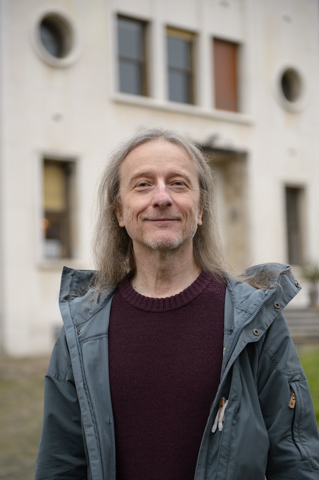
© Pierre Wachel /IAP-CNRS-SU
While studying musicology at the University of Paris 8 Vincennes - Saint-Denis, Jean Mouette applies for a contractual job as a part-time technical agent at IAP (as a student job). When he had accidentally opened Hubert Reeves' first book, “Patience in the Azure”, he had found himself drawn into the story of the history of the Universe, and had noted the job offer of the IAP. This reading earns him being to be selected in 1983 from among 30 candidates by Jean Audouze, the director of the institute at the time. He is then mainly responsible for printing theses and preprints on a desktop offset machine, which are sent to the main foreign laboratories in astrophysics.
Wishing to catch up with his academic level in maths and physics, and to pursue university studies, he trains through pre-baccalaureate evening classes. Eager to learn about all aspects of astronomy, he participates in 1985 in a summer university of the “Teachers astronomers liaison committee” (CLEA) during which he learns the basic principles of spectroscopy, to recognize the constellations, and to build a sundial.
Jean Mouette loves photography, being exposed very young by his father architect, who develops the photos of his construction sites in his own photo laboratory. The management of the IAP works for several years so that he is established full-time at the CNRS in 1989, which enables him to take charge of the photographic laboratory of the institute, and to open the field of his activities to outreach.
He was already passionate about science films, but there were very few films shown on television. In 1989 he begins to train in audiovisual techniques in the field of science, thanks to an internship at the CNRS Images, with movie and film directors Jean-François Dars and Anne Papillault, today authors of “Short stories”. He decides to complete this practical training by taking a year of individual training leave, at the end of which, in 1994, he obtains a bachelor in scientific and technical information and communication from the University of Paris 7 Denis Diderot.
In November 1985, Jean Mouette assists Serge Koutchmy, a physicist specializing in the solar corona (currently emeritus senior researcher of the CNRS at the IAP) to photograph Halley's comet[3] with the 120 cm telescope of the Observatory of Haute-Provence, then again in March 1986 from the roof of the Tamanrasset observatory in Algeria. His interest in photography and astronomy earns Jean Mouette the opportunity to accompany Serge Koutchmy on his trips around the world to study the solar corona during the few minutes during which the Moon perfectly covers the Sun's disk, at the time of a total eclipse. In addition to the solar physics measurements obtained during these observations, the images taken by Jean Mouette are used for scientific publications, and are distributed by the CNRS photo library. These observation missions are systematically carried out in connection with local universities, and are an opportunity to train and educate the general public on the observation of an eclipse.
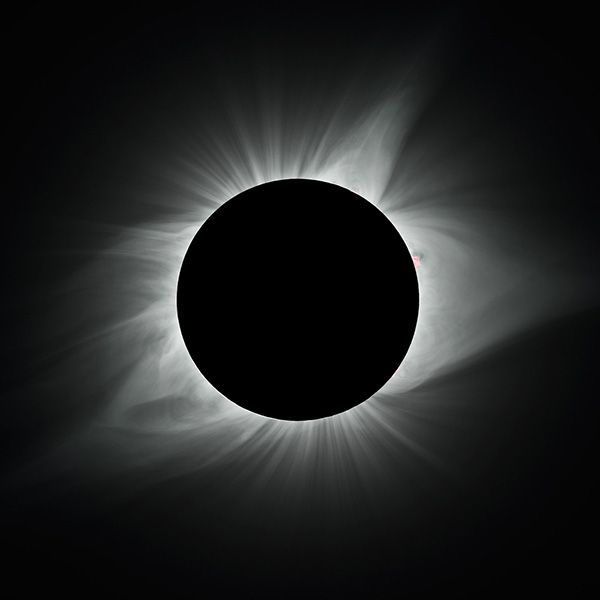
2017 Total Solar Eclipse
© Jean Mouette /IAP-CNRS-SU
For each of these missions, he leaves with a camera borrowed from the CNRS in order to keep a testimony of these exceptional adventures, which nourishes his talent as a filmmaker. His film of the mission in Iran in 1999 is edited by the Arte television channel, and will be broadcast there twice in 2000. During the mission in Angola in 2001, he is commissioned by the CNRS Images for a 26-minute movie (edited together with a professional), which will receive two prizes in 2001 and 2002: the “Anger International Festival of Scoop and Journalism” and the “Nancy Research Film Festival”. For the recent total eclipse in the United States in 2017, a production company orders images from him for a one and a half hour documentary on the Sun, broadcast in the first part of the evening on TV channel France 5. Moreover, he directs commissioned documentaries for the CNRS, all broadcast by its video library. In 2013, on the occasion of IAP's 75th anniversary, he directs (in co-production with CNRS Images) a 25-minute documentary for which the director of the institute, Laurent Vigroux, gives him a free hand. In 2019, he shoots and edits a 17-minute film of the measurement campaign in China, by the team of Kumiko Kotera (CNRS researcher at IAP), within the framework of the GRAND project (Giant Radio Array for Neutrinos Detection).
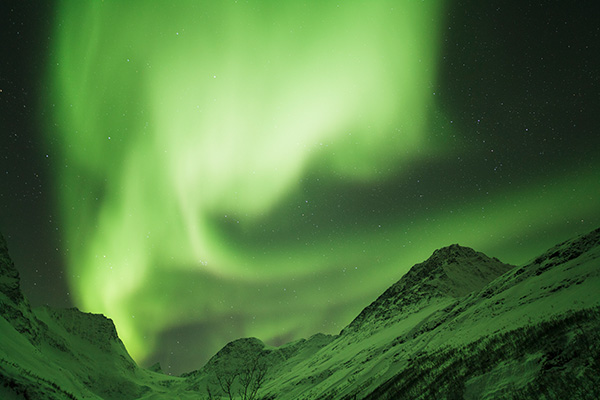
Northern lights in the north of Norway in 2010
© Jean Mouette /IAP-CNRS-SU
In 2010, Jean Mouette begins to photograph the northern lights, another way to scrutinize the plasma that constitutes the solar corona. This takes him to Norway and allows him to satisfy his taste for the mountains. He then takes his first aurora photos, which are in the CNRS photo library and are used regularly. The period is particularly favorable for turning to the auroras: the solar cycle begins a new phase of activity after a minimum at the beginning of 2008. In 2012, he decides to take on a technical challenge: filming the auroras. Until then, aurora films were animations of successive photos taken typically every 10 seconds. To film the auroras, you need video sensors that are sensitive enough so that each image collects sufficient light in only fractions of a second. He finds information on the web about a camera that replicates the performance of a brand new professional camera, but cheaper. He buys it with his personal savings and organizes a trip to Norway in 2012 which enables him to validate the ability of this new ultra-sensitive sensor to film the Northern Lights in real time.
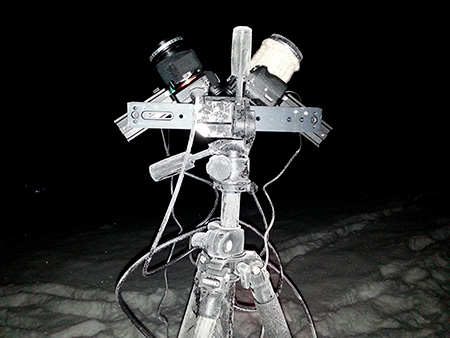
One of the two “eyes” for filming the northern lights
© Jean Mouette /IAP-CNRS-SU
Jea Mouette convinces the astrophotographer Thierry Legault to acquire the same camera, with the somewhat crazy aim of achieving the first filmed images of the entire sky, and in stereoscopy. They succeed in 2015, after a series of attempts and improvements to the technique (see the story of this adventure). Until 2019, they carry out a series of sequences of a few minutes showing the auroras waving in real time and in 3D, as if looking at them with two eyes separated by a few kilometers. Éric Hivon (CNRS research engineer at the IAP) brings an essential contribution to the combination of the images of the two “eyes” that the cameras represent: to correct for the distortions of the celestial vault induced by the camera lenses, with catalogs of stars and algorithms that he developed thanks to his expertise in the measurements of the cosmic diffuse background in the Planck project.
These sequences were, at the invitation of the Paris Observatory, broadcast in Paris in 3D (using stereoscopic glasses) at the Grand Rex movie theater, as well as at the Cité des Sciences planetarium (in 2D). Laurent Préyale, director of a 52-minute film (“Are the Northern Lights made of the material from which we weave dreams?”), followed the team on the ground in northern Norway ; his film was broadcast several times in 2020 on La Chaine Parlementaire (LCP), as well as once live on the IAP YouTube channel. For their last mission in January 2019, they benefit from the support of the Plas@Par Laboratoire d’Excellence of Sorbonne University, with which they continue to broadcast their images to the public. The next increase in solar activity will likely provide an opportunity to continue the hunt for the auroras.
Jean Mouette's work is part of the process of a strong involvement of the IAP staff in sharing scientific knowledge, whether with schools, through the hosting of internships and classes, and of course higher education; but also towards the general public with open days, the Science Festival, the participation of researchers in radio and television broadcasts, the writing of numerous books, interviews, associative events, etc. In 1995, Jean Mouette creates the institute's first website with Patrick Guillemin, a PhD student of Jacqueline Bergeron. No one at the time understood the value of such a tool. In 2011, he actively participates in the realization of the current website, more particularly its graphic charter and its layout. He collaborates with Valérie de Lapparent (CNRS senior researcher, website's editorial director) on the Sciences highlights and Must-see sections for the layout and monitoring of news; he is also responsible for the website's iconography, and he maintains all the outreach pages (public conferences, science festival, astronomy night etc.).
In 1995 also, he created the cycle of monthly public conferences of the IAP, which still exists in 2021, and for which the 130 seat amphitheater fills out a few hours after registration opens. For the organization of these conferences, he was joined in 2000 by Daniel Kunth (CNRS emeritus senior researcher at the IAP); in 2014, Florence Durret (senior astronomer at the IAP) and Guillaume Hébrard (CNRS senior researcher at the IAP) in turn join the public lectures team. These conferences present the results of the state of knowledge by researchers in astrophysics and physics, but also in philosophy, history of science and sociology. Jean Mouette has been filming these conferences regularly since their very beginning. In 2004, in partnership with Canal U, the university channel launched on the Internet in 2000, he systematically films the conferences and publishes the films on DVD. They then become accessible to the general public. In 2015, he digitizes the first public lectures he had recorded on video cassettes (from 1999 to 2003), and makes them accessible from the IAP website, a huge archiving job, essential for the story of these conferences and the history of the knowledge transmitted there.
Again in 2015, thanks to the purchase of a semi-automatic video capture system, he organizes the recording in the amphitheater of all the talks to the researchers, in which one can see simultaneously the speaker and the slides: weekly seminars, thesis defenses, annual conferences. He edits each video and puts it online on the IAP website, via a tool developed by Lionel Provost (CNRS computer engineer at the IAP), and allowing one to search by keyword through the slides. As a natural outcome of this work, in 2017 he creates the IAP YouTube channel, and includes all the videos produced by the institute or in which researchers from it participated. This YouTube channel currently has close to 16,000 subscribers, a rapidly growing number (some videos collect hundreds of thousands of views).
During the COVID19 pandemic in 2020, and faced with the impossibility of welcoming the public to the institute, he sets up the live broadcast of the public lectures on the YouTube channel, ensuring that the IAP remains at the cutting edge of audiovisual technology - by purchasing better quality audiovisual recording equipment. These live broadcasts make it possible to attract an average of 300 people, with peaks of nearly 600 for the most attractive subjects, and a more diverse audience than the one that used to register for the conferences in the amphitheater (there is no more limit in the number of people attending a conference).
These broadcasts and recordings also benefit the “Science Festival” (an annual nationwide event held in October in which IAP actively participates, as well as at the “Night of Astronomy” since 2019, during which conferences are held at the IAP, welcoming the general public continuously throughout the night. As an important complement to the YouTube channel, Jean Mouette registered the IAP on social networks (Facebook et Tweeter) in 2017, and ensures the presence and responsiveness of the institute on these networks, while transmiting information on current events of the institute.
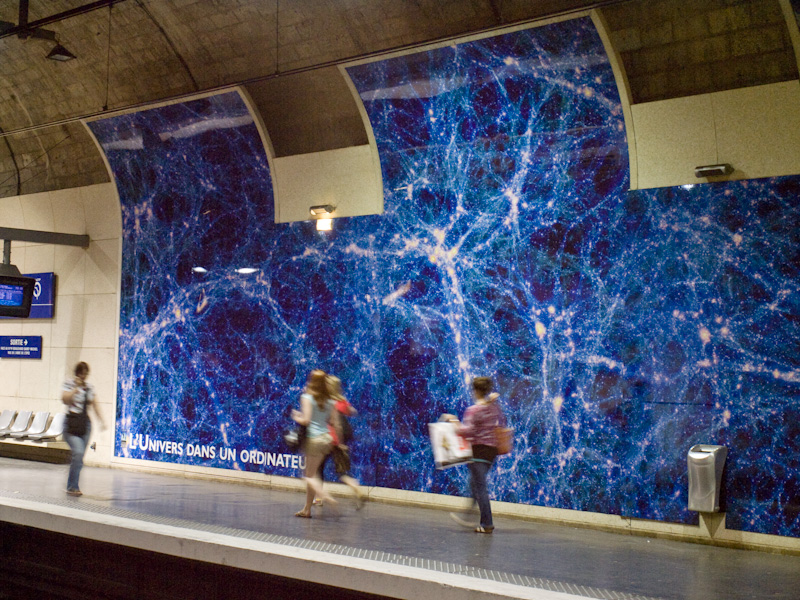
International Year of Astronomy 2009 in the Parisian subway
© Jean Mouette /IAP-CNRS-SU
Young, Jean Mouette dreamed of being a jazz violinist. He has brilliantly played his entire career with cameras and video cameras, which have given professionals and the general public deep emotions in front of the beauty of the astronomical phenomena. Through these activities, but not only, the IAP owes a large part of its visibility to the general public. In 2005, he was appointed by Laurent Vigroux (director of the IAP) responsible for communication, a position he had fulfilled de facto for years in the institute through his numerous initiatives essential to the standing of the institute: for instance, for the International Year of Astronomy in 2009, he designed and created a 600-square-metre exhibition of night sky images on the platforms of the Luxembourg RER station in Paris. The 2020 crystal medal he receives from CNRS rewards his entire career, and echoes the recognition due by the IAP for all of his work.
Notes
[1] In collaboration with the team of Serge Koutchmy, presently CNRS emeritus senior researcher at the IAP
[2] With Thierry Legault (astrophotographer) and Éric Hivon, CNRS research engineer at the IAP, as well as the technical assistance of François Sèvre (retired CNRS engineer at the IAP)
[3] One of his photos was awarded the prize for originality of landscape by the Science et Vie magazine.
Liens
![]() They don't have cold feet and shoot the northern lights in 3D
They don't have cold feet and shoot the northern lights in 3D
![]() The video portrait of Jean Mouette on the CNRS YouTube channel
The video portrait of Jean Mouette on the CNRS YouTube channel
Interview and writing: Valérie de Lapparent
Layout and editing: Jean Mouette
June 2021
